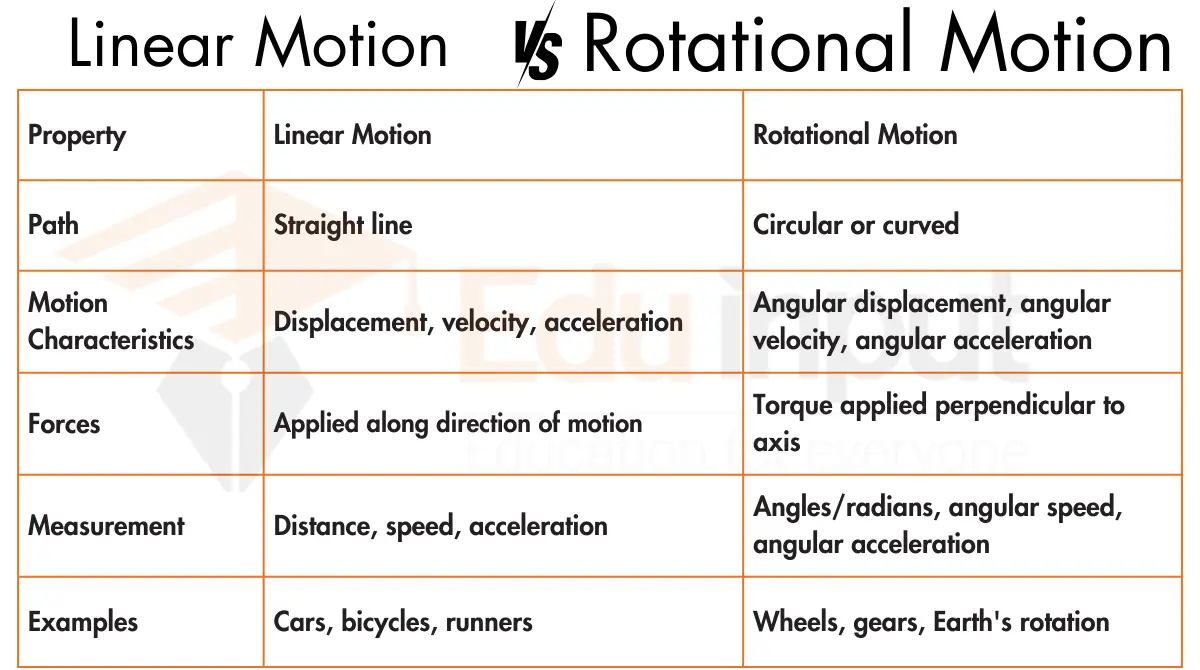Difference between Kinetic Energy and Potential Energy
The key difference between kinetic and potential energy is that kinetic energy depends on the motion of an object, while potential energy depends on its position or stored state.
Kinetic energy is the energy of motion, while potential energy is the energy stored because of position or condition. In physics, these two are considered the main types of energy, and other forms, such as chemical, thermal, or electrical, are derived from them.
When we compare kinetic and potential energy with examples, the idea becomes clearer. A moving car or a falling ball are examples of kinetic energy, while a stretched spring or water stored behind a dam are examples of potential energy.
In short, the main difference between kinetic and potential energy is that one is active (motion) and the other is stored (position). Let’s break them down in detail.
What is Kinetic Energy?
Kinetic energy is the energy a body has because of its motion. In physics, the difference between kinetic and potential energy starts here: kinetic energy is active energy, while potential is stored. A moving object, like a rolling ball or a speeding car, carries kinetic energy in physics because it has both mass and velocity.
K.E=1/2mv2
This formula shows that velocity has a huge impact—double the speed means four times the energy. That’s why objects moving quickly are more dangerous: they have higher kinetic energy.
Examples of kinetic energy include:
- A moving train
- Flowing water in a river (used in hydroelectric power)
- A baseball in motion
In many situations, potential energy is converted into kinetic energy. For example, if you drop a book from a tall building, at the top it has gravitational potential energy. As it falls, that energy changes into kinetic energy until it hits the ground. This simple experiment is often used in class 9 science to help students compare kinetic and potential energy with examples.
What is Potential Energy?
Potential energy (PE) is the energy stored in a system due to its position. It is the energy associated with the position of objects that are not moving. When you lift a book off the floor, you are adding potential energy to the book.
P.E=mgh
Here, mass (m), gravity (g), and height (h) determine the amount of energy stored. Raising a book onto a shelf increases its gravitational potential energy. A stretched rubber band stores elastic potential energy, while food and fuel contain chemical potential energy.
Examples of potential energy include:
- Water stored behind a dam (gravitational potential energy)
- A stretched spring or bow (elastic potential energy)
- A lifted hammer before it falls
When released, this stored energy transforms into kinetic energy. For instance, standing on a ladder gives you potential energy due to height. If the ladder falls, that stored energy quickly changes into motion, showing the relationship between kinetic and potential energy in real life.
Difference between Kinetic Energy and Potential Energy
There are some important difference between kinetic energy and potential energy.
| Kinetic Energy | Potential Energy | |
| Definition | The energy possessed by an object due to its position or configuration | Energy possessed by an object due to its position or configuration |
| Symbol | KE | PE |
| Formula | KE = (1/2)mv^2 (where m is mass and v is velocity) | PE = mgh (where m is mass, g is acceleration due to gravity, and h is height) |
| Nature | Active energy | Stored energy |
| Depends on | Object’s mass and velocity | Object’s position or configuration |
| Units | Joules (J) | Joules (J) |
| Examples | Moving car, a ball in motion | Stretched spring, raised object |
| Conversion | Kinetic energy can be converted into other forms of energy, like potential energy or heat | Potential energy can be converted into kinetic energy when the object is in motion |
| Relationship | Kinetic energy increases as the object’s velocity increases | Potential energy increases as the object’s height or position increases |
Relation Between Kinetic and Potential Energy
The relation between kinetic energy and potential energy is shown in falling objects.
- At the top: maximum potential energy, zero kinetic energy.
- During fall: potential decreases, kinetic increases.
- Just before hitting the ground: maximum kinetic energy, minimum potential energy.
This is why many exam questions ask you to compare kinetic and potential energy in a falling body.
Frequently Asked Questions-FAQS
Explain the difference between kinetic and potential energy with examples.
A flying arrow = kinetic energy. A stretched bow = potential energy.
What is the difference between Kinetic Energy and Potential Energy?
A moving object’s kinetic energy can be transferred to another object (vibration or rotation), and it is dependent on the object’s speed and mass. No matter how much potential energy an object has, it cannot be transferred to another object.
What is the difference between chemical potential energy and kinetic energy?
Chemical potential energy is stored in bonds, while kinetic energy is energy of movement.
Can there be both potential and kinetic energy?
An object can have both kinetic and potential energy at the same time. For example, an object which is falling, but has not yet reached the ground has kinetic energy because it is moving downwards, and potential energy because it is able to move downwards even further than it already has.
What is the relationship between the kinetic and potential energy of a falling object?
The potential energy is the product of the object’s mass, height, and gravity. Kinetic energy is half the product of the object’s mass and its velocity squared.







Leave a Reply